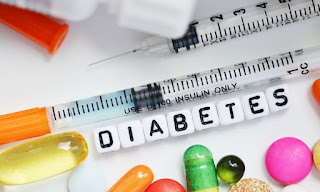DIABETES & PREVENTIVE ASANAS.
There are two types of diabetes - Type 1 and Type 2. In Type 1 diabetes, the pancreatic gland does not produce insulin. In Type 2 diabetes, the body does not produce sufficient amount of insulin hormone or the hormone is produced sufficiently but it is not used properly by the body.
Major Asanas for preventing Diabetes are -:
A. BHUJANGASANA -
Procedure - In order to perform this asana, lie down on the belly on the ground. Keep your hands near the shoulders, keep your legs close together. Now straight up your arms slowly and raise the chest, your head should be backward. Perform this asana for 3 to 5 times for good result.
Benefits -
A. It increases our strength and ability.
B. It makes the vertebral column flexible and thin.
C. It cures indigestion, disorders.
D. It improves blood circulation and it also cures disease of liver.
Contraindications -
A. Pregnant women should not perform this asana.
B. This asana must be avoided by people who suffer from hernia, back injuries, headaches and recent abdominal surgeries
B. PASCHIMOTTANASANA -
Procedure - Sit on the ground with legs forward. Then hold your toes with help of your fingers, while going down exhale slowly and now try to touch your head with your knees. After that breathe in slowly and gently raise your head up to come back in normal position. For affective results one must do this asana for 10 to 15 times.
Benefits -
A. Best remedy for constipation.
B. Helpful in removing all skin related problems.
C. Vertebra becomes healthy and flexible.
D. It reduces obesity, gives relief in sciatica, backache and asthma.
Contraindications -
A. If an individual is suffering from respiratory diseases he / she should not avoid this asana.
B. One having back or spinal problems should avoid or he can perform this asana but only under experts guidance.
C. PAWANMIKTASANA -
Procedure - lie down on a back on a plane surface. Keep your feet together and place your arms beside your body. Take a deep breath. While exhaling bring your knees towards your chest. At the same time pressure thighs on your abdomen. Clasp your hands around your legs. Hold the asana when your breathing is normal. Make sure that with every inhale, you have to loosen your grip.
Benefits -
A. It eases the tension in lower back.
B. It enhances blood circulation in pelvic area.
C. It helps in reducing the fats of thighs, buttocks and abdominal area.
D. It massages the intestine and organs of digestive system which helps in improving digestion.
Contraindications -
A. Pregnant women should avoid doing this asana.
B. If you had an abdominal surgery recently you should perform this asana under expert guidance.
C. Individual having piles should avoid performing this asana.
D. ARDHMATSEYENDRASANA -
Procedure - First of all sit on a flat surface. Then keep the left heel under the right thigh and the right leg is crossed over the left thigh. After that hold the right to with the left hand and turn your head and back to the right side. In this position more the trunk sideways.
For better results one should perform this asana for 10 times from each side.
Benefits -
A. It keep the gall bladder and prostate gland healthy.
B. It is helpful in treating constipation, urinary tract, menstrual disorders and cervical spondylitis.
C. It enhances the stretchability of back muscles.
D. It maintain the flexibility of body.
Contraindications -
A. Pregnant women should avoid this asana.
B. The individual suffering from hernia or hypothyroidism should perform this aasan under experts guidance.
Thankyou for visiting.








Comments